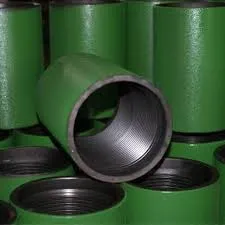- Afrikaans
- Albanian
- Amharic
- Arabic
- Armenian
- Azerbaijani
- Basque
- Belarusian
- Bengali
- Bosnian
- Bulgarian
- Catalan
- Cebuano
- Corsican
- Croatian
- Czech
- Danish
- Dutch
- English
- Esperanto
- Estonian
- Finnish
- French
- Frisian
- Galician
- Georgian
- German
- Greek
- Gujarati
- Haitian Creole
- hausa
- hawaiian
- Hebrew
- Hindi
- Miao
- Hungarian
- Icelandic
- igbo
- Indonesian
- irish
- Italian
- Japanese
- Javanese
- Kannada
- kazakh
- Khmer
- Rwandese
- Korean
- Kurdish
- Kyrgyz
- Lao
- Latin
- Latvian
- Lithuanian
- Luxembourgish
- Macedonian
- Malgashi
- Malay
- Malayalam
- Maltese
- Maori
- Marathi
- Mongolian
- Myanmar
- Nepali
- Norwegian
- Norwegian
- Occitan
- Pashto
- Persian
- Polish
- Portuguese
- Punjabi
- Romanian
- Russian
- Samoan
- Scottish Gaelic
- Serbian
- Sesotho
- Shona
- Sindhi
- Sinhala
- Slovak
- Slovenian
- Somali
- Spanish
- Sundanese
- Swahili
- Swedish
- Tagalog
- Tajik
- Tamil
- Tatar
- Telugu
- Thai
- Turkish
- Turkmen
- Ukrainian
- Urdu
- Uighur
- Uzbek
- Vietnamese
- Welsh
- Bantu
- Yiddish
- Yoruba
- Zulu
Understanding the Benefits and Applications of Seamless Pipes in Construction
The Versatility of Seamless Pipes Essential for Modern Applications
Seamless pipes have become an integral component in various industries due to their unique characteristics and advantages. Unlike welded pipes, seamless pipes are manufactured without any joints or seams, making them inherently stronger and more reliable for high-pressure applications. This article explores the properties, manufacturing processes, and applications of seamless pipes, highlighting their significance in modern engineering.
Manufacturing Process
The production of seamless pipes typically involves the use of specific materials, such as carbon steel, stainless steel, or alloy steel, which are selected based on the intended application. The manufacturing process begins with heating a solid round billet to a high temperature, making it malleable. Once heated, a piercing rod is inserted into the billet to create a hollow section. This initial hollow pipe is then elongated and shaped into the desired diameter and length through a process known as rotary piercing or extrusion. The result is a strong, seamless tube that is less susceptible to defects.
After forming, the seamless pipes undergo various treatments, including heat treatment and surface finishing, to enhance their mechanical properties and ensure resistance to corrosion
. This careful manufacturing process results in a product that meets stringent industry standards, including ASTM and ASME specifications.Advantages of Seamless Pipes
One of the primary advantages of seamless pipes is their superior strength and durability. The absence of welds minimizes the risk of failure under high pressure or extreme temperatures, making them ideal for applications in the oil and gas industry, power generation, and chemical processing. Additionally, seamless pipes exhibit excellent resistance to stress and corrosion, which is crucial for maintaining integrity in harsh environments.
seamless pipe

Seamless pipes also offer versatility in terms of dimensions. They can be produced in a wide range of sizes and wall thicknesses, catering to specific applications and client requirements. This adaptability makes them suitable for diverse industries, from construction to automobile manufacturing.
Applications
Seamless pipes are widely used in several critical applications. In the oil and gas industry, they are essential for transporting crude oil and natural gas through pipelines, where safety and reliability are paramount. These pipes are also extensively utilized in power plants for steam generation and in petrochemical plants for transporting various fluids and gases.
Furthermore, seamless pipes play a vital role in construction, particularly in structural applications. Their strength makes them ideal for use in building frameworks, scaffolding, and for various mechanical purposes. The aerospace and automotive industries also benefit from the lightweight yet strong attributes of seamless pipes for manufacturing components that require high performance and reliability.
Conclusion
In conclusion, seamless pipes are a crucial element in modern engineering and construction, offering unmatched strength, versatility, and reliability. Their unique manufacturing process results in products that can withstand high pressures, making them indispensable in a variety of applications. As industries continue to innovate and evolve, the demand for high-quality seamless pipes will undoubtedly increase, reinforcing their importance in the global market. Whether in oilfields or skyscrapers, seamless pipes are indeed the backbone of modern infrastructure.
-
Well Casing Extension Couplings – Applications and InstallationNewsJun.06,2025
-
Types of Crossover Subs in Drilling & CompletionNewsJun.06,2025
-
Key Features of High-Quality Tubing Pup JointsNewsJun.06,2025
-
Installation and Maintenance Tips for Steel Couplings for PipeNewsJun.06,2025
-
How to Select the Right Pup Joint for Oil & Gas OperationsNewsJun.06,2025
-
Applications of Stainless Steel Pipe CouplingsNewsJun.06,2025







